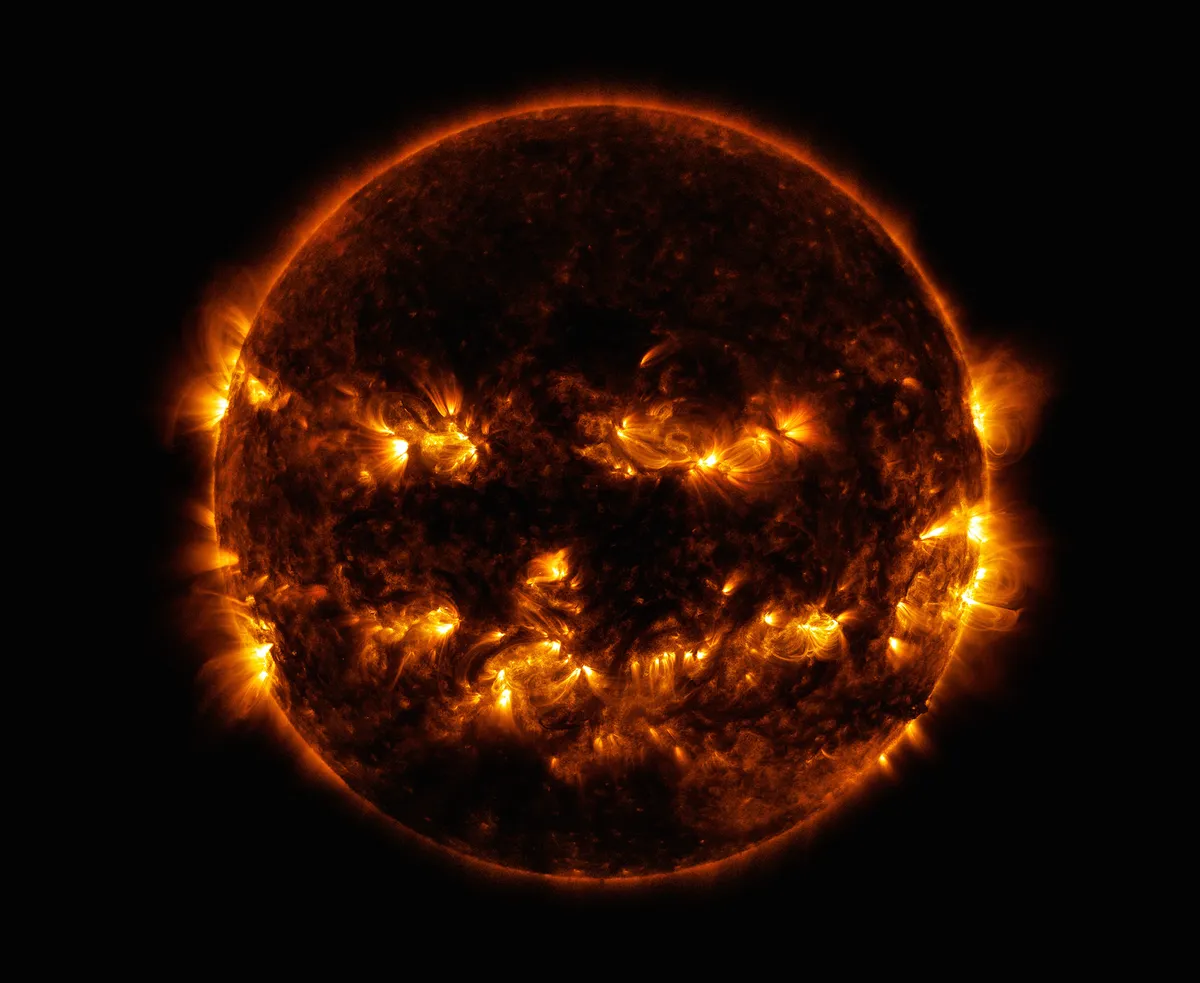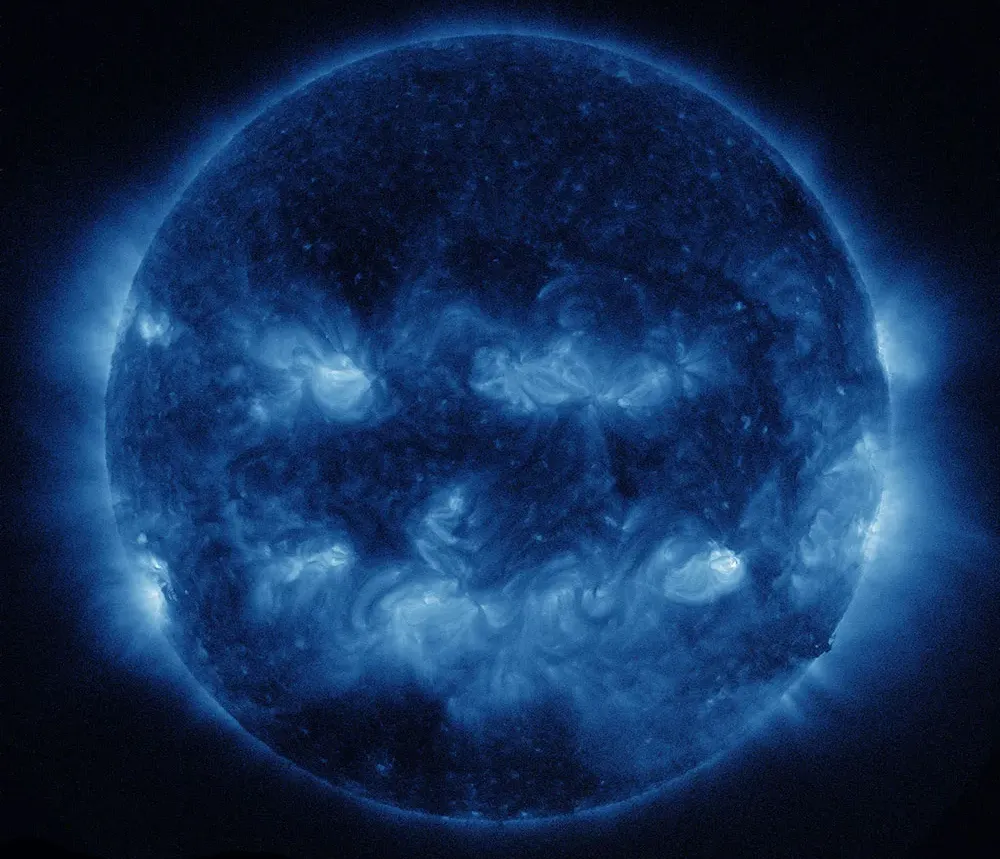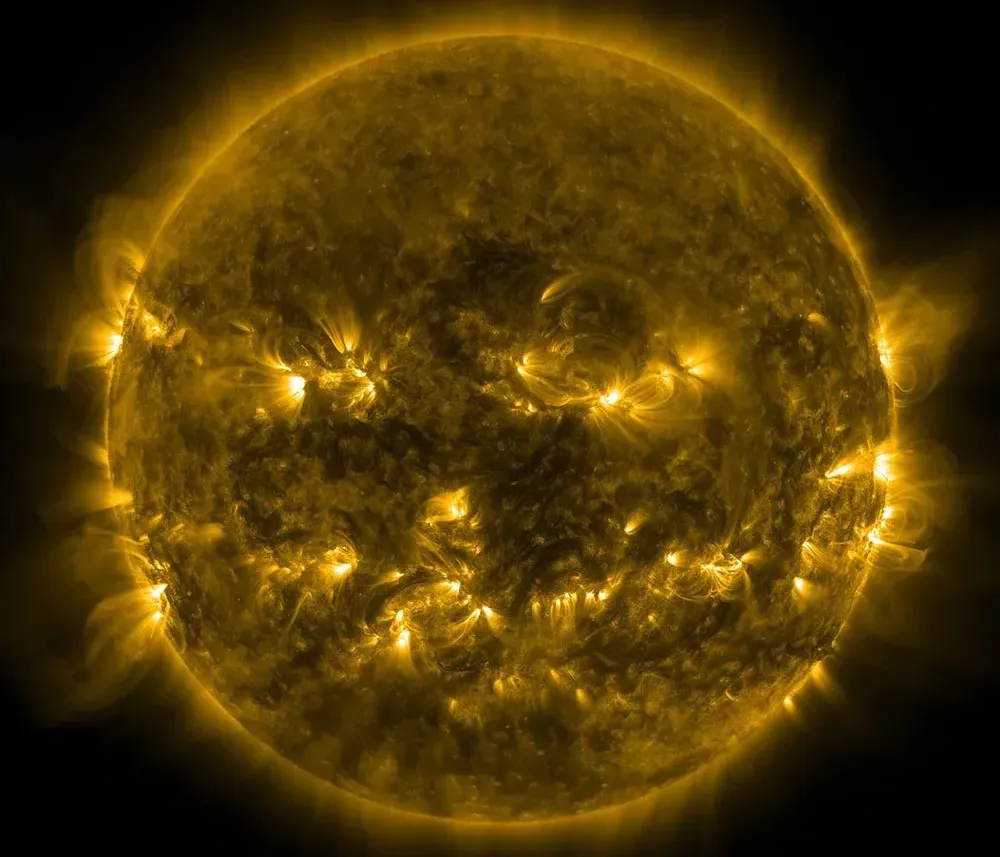This fiery jack o' lantern may look like a lit pumpkin on Halloween night, but it's actually an image of our Sun captured by NASA's Solar Dynamics Observatory.
NASA's SDO telescope observes our host star as it orbits Earth and is one of many spacecraft dedicated to the study of the Sun.
More spooky space stuff

This image was captured on 8 October 2014 and has become famous over the years, often referred to as the NASA Halloween Sun.
But what makes this image look so much like a Halloween Sun?

The Halloween Sun explained
It's the active regions on the solar surface. These regions are brighter because those areas emit more light and energy.
They are intense magnetic fields hovering in the Sun's corona; the outermost part of the Sun's atmosphere.
The NASA Halloween Sun image blends together two sets of wavelengths at 171 and 193 angstroms.
And because these wavelengths are usually coloured in gold and yellow hues, it gives the jack-o-lantern Sun its Halloween-like appearance.

Take a look at the NASA Halloween Sun image above.
It's the same one captured by the Solar Dynamics Observatory, but presented in 335 angstrom extreme ultraviolet light, which makes the pumpkin appear blue.
And below is another view of the Halloween Sun, captured in 171 angstrom extreme ultraviolet light.
The pumpkin appears bright golden yellow, with the areas surrounding the active regions much more visible.


